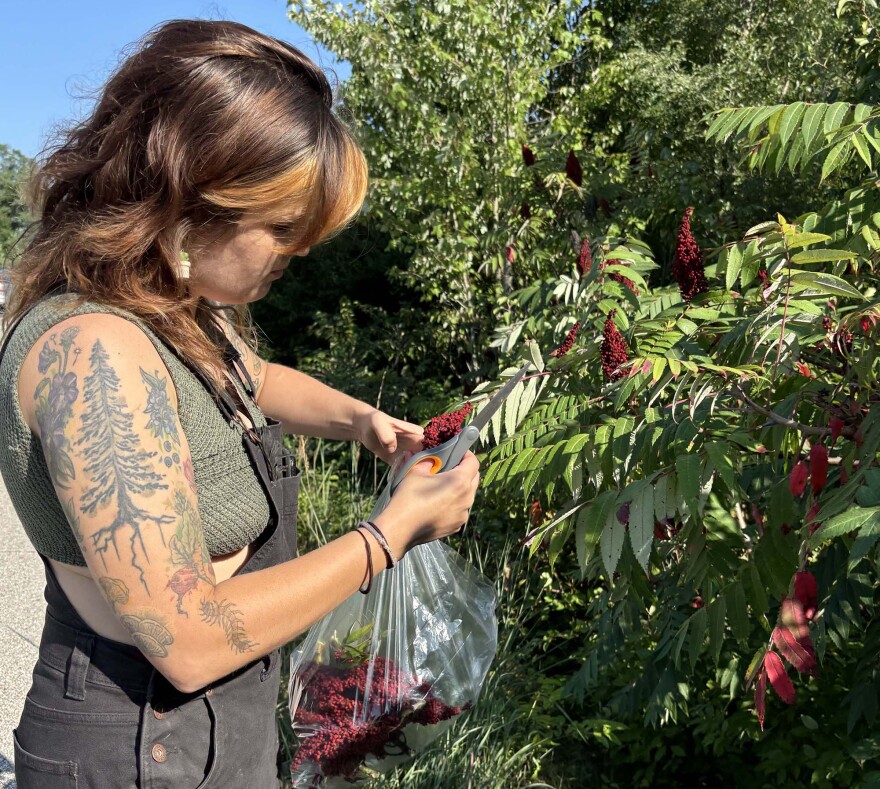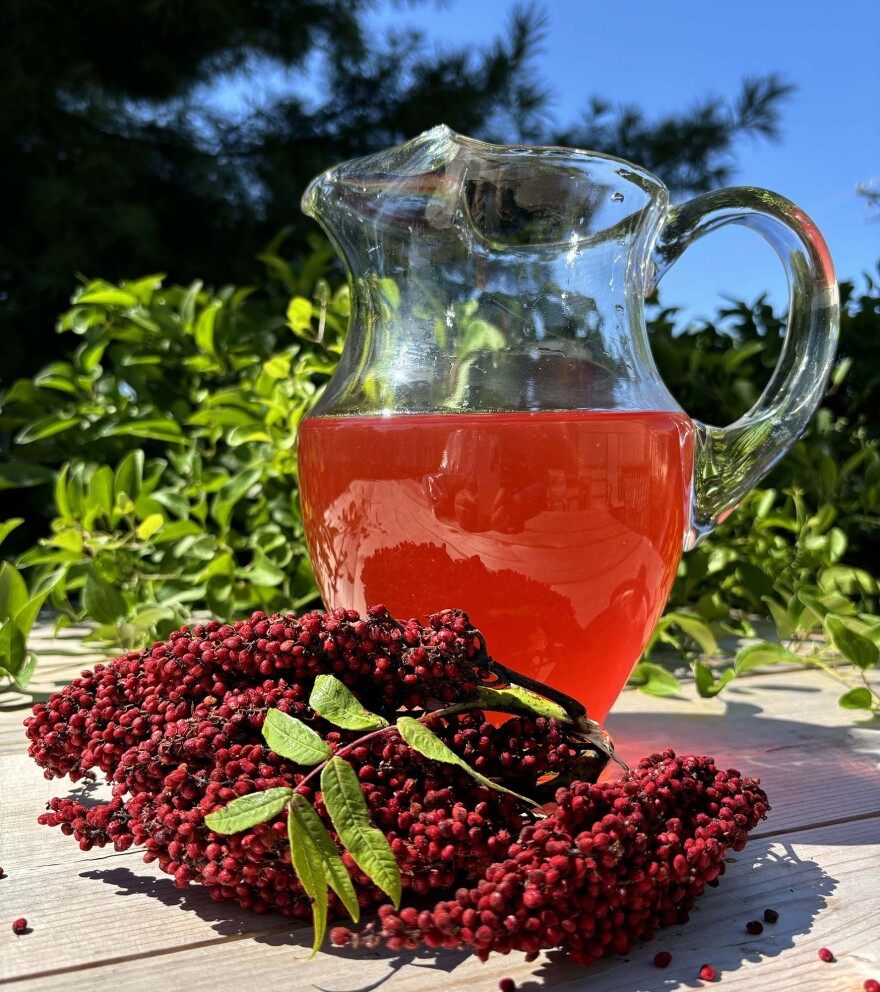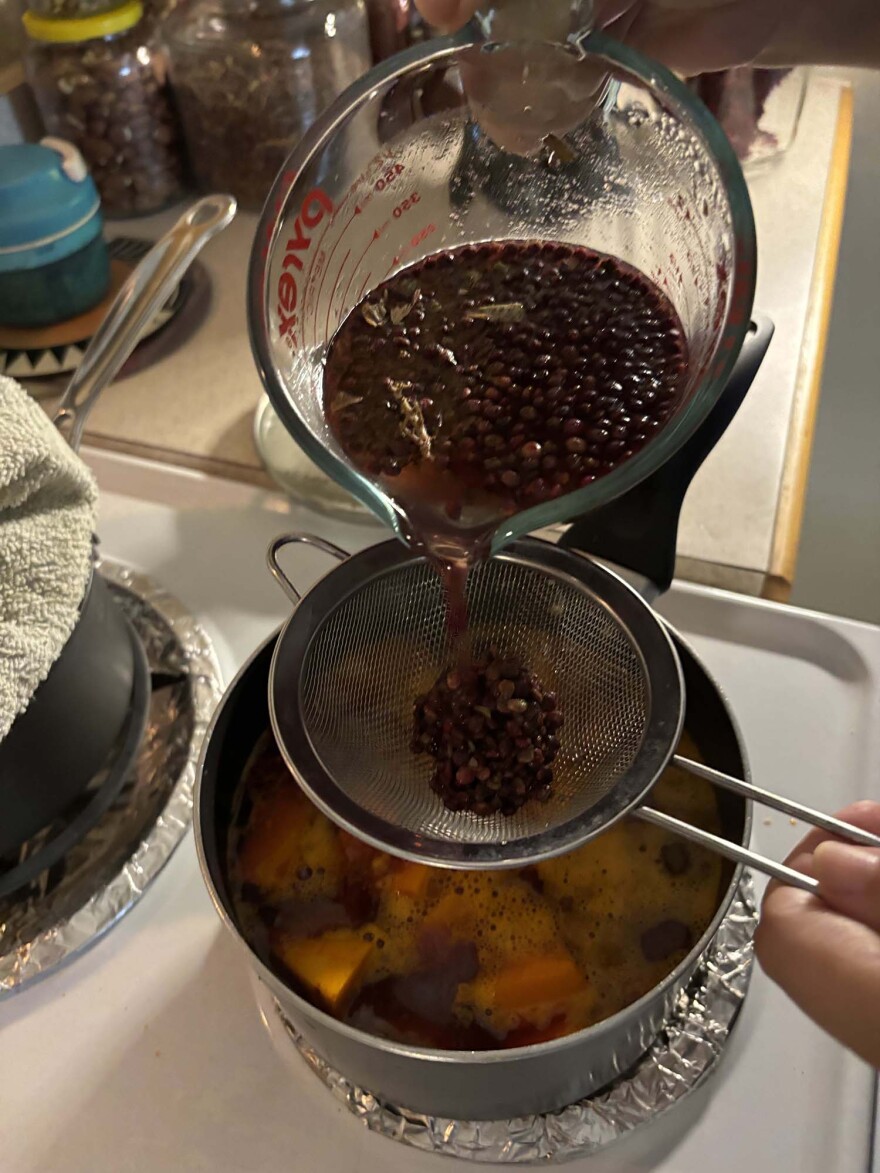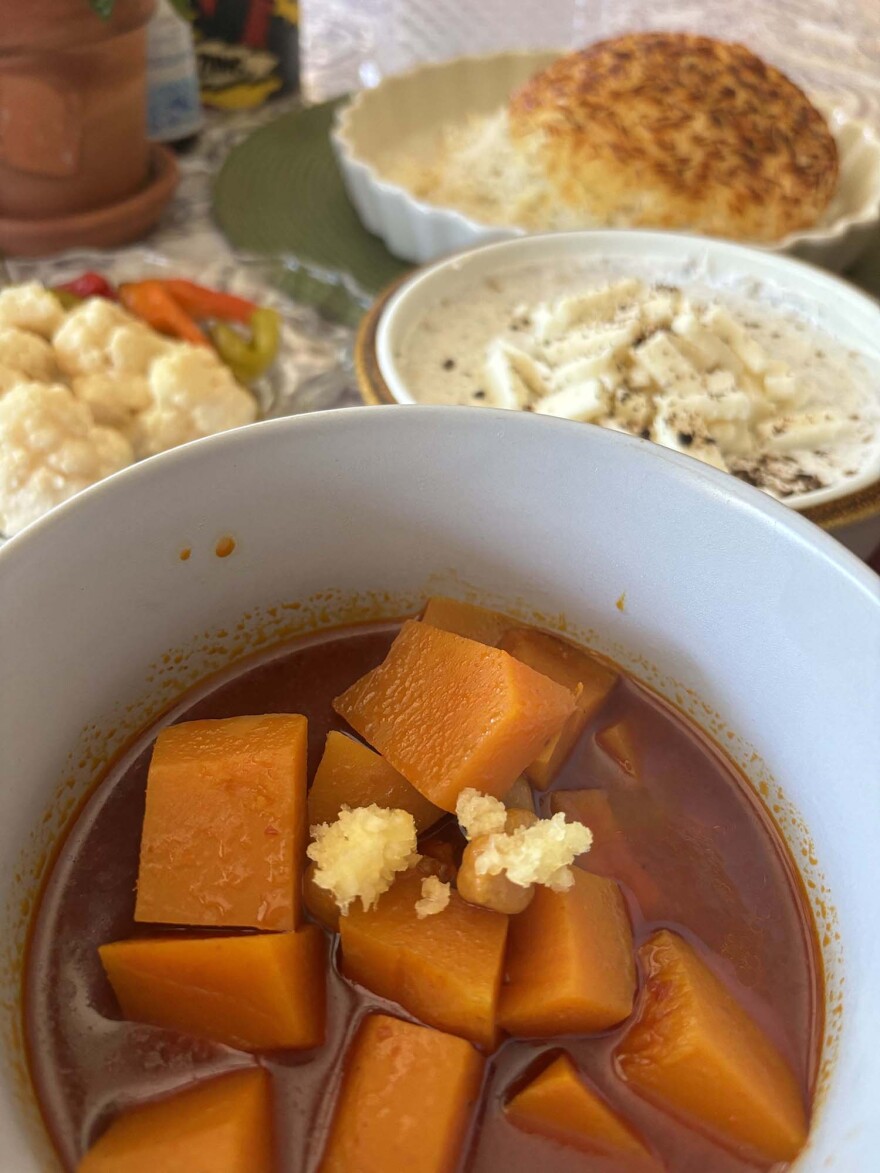“Wild rice camp started a long time ago. It actually started thousands of years ago, with our ancestors having a real-time lifeway.”
We have a jam-packed show for you today featuring traditional foodways from the original inhabitants of this land, foods from lands far away–Anatolia and Mongolia, as well as right here in our own back yard. Wild rice harvested in a canoe, sumac by the side of the road, and for dessert? Pawpaw ice cream.
Gathering wild rice in a canoe
In the fall of 2024 I had the chance to talk with Nicole Keith, Food Sovereignty Coordinator of the Nottawasepi Huron Band of the Potawatomi (also known as NHBP) and Kevin Harris, Culture Specialist with the NHBP.
They visited Bloomington in the fall of 2024 to share a film about wild river rice with The First Nations Educational and Cultural Center on the IU campus, in partnership with the IU Media School. The film is called Mnomen | Wild Rice "From the River Banks to the Table.”
Sumac
Driving down the road in the midwest in the fall, you might notice some dark burgundy colored pointed shapes jutting out from dense foliage. It’s called Sumac–Staghorn sumac. And guess what? It’s edible. The flavor is tangy almost lemony. You can make a bright red tea that tastes like lemonade, and you can use it in savory dishes.

I asked Liz Barnhart to take me out to her favorite spot to harvest some. You might remember Liz (she also goes by Lou) talking about elderberries on a previous Eats WIld episode She teaches foraging classes at The Hub, Ivy Tech and through Forage & Feasts.

At home I tried some sumac-ade, which was tasty and a big hit with everyone who tried it.
Then I met up with Derya Doğan who walked me through the steps of making a sumac seasoned winter squash stew–well known in her home town in Southeast Turkey. You might remember Derya from an episode where she shared a recipe for Turkish hand pies.


Derya is a PhD candidate in Education Policy Studies in Middle Eastern Languages and Cultures at Indiana University.
Traditional Mongolian foodways
Grace and Chris are raising a family and SO MANY varieties of native, food-bearing trees and shrubs on their farm they call Worries Are Gone, or WAG. The name really comes from the initials of their kids’ names. They also have dogs (and goats, and chickens…). Chris is deep into the science and the craft of grafting. Unfortunately, I didn’t get to share anything about that in this episode.

I visited their farm in the hopes of talking to Grace about foraging. She grew up in Mongolia, where foraging isn’t a hobby, it is a way of life.
Pawpaw Ice Cream
One of the native food bearing trees they grow out at WAG Farm is pawpaw, the fruit they often call Indiana Banana since it is so sweet and tropical tasting. I’ve noticed it tastes best uncooked. Ice cream is my favorite pawpaw recipes. We walk through the steps on how to make it at the end of this episode. I made use of some tips I learned from The Appalachian Forager.
Farewell
Making Earth Eats for the past 8 years has been a joy. I have deep appreciation for anyone who has ever listened–even to one episode. It means the world to me.
I am honored to have had the chance to share these food stories, conversations and recipes with you, and I am excited to expand into the world of art and culture with our new show, Nice Work. Of course food is all about culture, so I’ll still be exploring food. Listen Saturday mornings at 7 and Sundays at noon on WFIU, or search for Nice Work in your favorite podcast app and on YouTube.
I hope you’ll join me.
Thank you.
CREDITS
The earth eats team has included MANY people not named here, but currently it’s Eoban Binder, Alex Chambers, Aaron Cain, Toby Foster, Luann Johnson, Leo Paes, Samantha Shemenaur, and we partner with Harvest Public Media.
Special Thanks this week to Alexis Carvajal, Liz Barnhart, Derya Doğan, Chris and Grace at WAG Farm, Nicole Keith, Kevin Harris, Adin Kawate and Sherene Goatson Ing
Earth Eats is produced and edited by me, Kayte Young. Our theme music is composed by Erin Tobey and performed by Erin and Matt Tobey. Additional music on the show comes to us from Universal Production Music. Our executive producer is Eric Bolstridge


